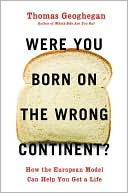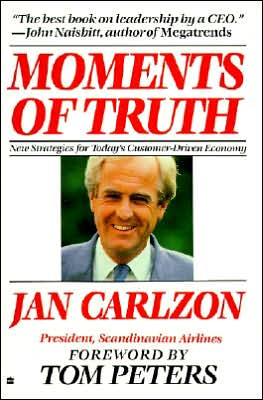Hell's Cartel: IG Farben and the Making of Hitler's War Machine
“A damning new history . . .Jeffreys brings a rare combination of forensic acumen and narrative flair.” —Chicago Tribune\ At its peak in the 1930s, the German chemical conglomerate IG Farben was one of the most powerful corporations in the world. To this day, companies formerly part of the Farben cartel—the aspirin maker Bayer, the graphics supplier Agfa, the plastics giant BASF—continue to play key roles in the global market. IG Farben itself, however, is remembered mostly for its infamous...
Search in google:
The remarkable rise and shameful fall of one of the twentieth century’s greatest conglomeratesAt its peak in the 1930s, the German chemical conglomerate IG Farben was one of the most powerful corporations in the world. To this day, companies formerly part of the Farben cartel—the aspirin-maker Bayer, the graphics supplier Agfa, the plastics giant BASF—continue to play key roles in the global market. IG Farben itself, however, is remembered mostly for its infamous connections to the Nazi Party and its complicity in the atrocities of the Holocaust. After the war, Farben’s leaders were tried for crimes that included mass murder and exploitation of slave labor. In Hell’s Cartel, Diarmuid Jeffreys presents the first comprehensive account of IG Farben’s rise and fall, tracing the enterprise from its nineteenth-century origins, when the discovery of synthetic dyes gave rise to a vibrant new industry, through the upheavals of the Great War era, and on to the company’s fateful role in World War II. Drawing on extensive research and original interviews, Hell’s Cartel sheds new light on the codependence of industry and the Third Reich, and offers a timely warning against the dangerous merger of politics and the pursuit of profit. Publishers Weekly British journalist Jeffreys (Aspirin: The Remarkable Story of a Wonder Drug) pre-sents a compelling account of the comprehensive collaboration of Germanya's major chemical conglomerate with Adolf Hitlera's genocidal dictatorship. The fourth largest industrial concern in the world, IG Farben was a key element of German foreign policy. Its employees were well treated. Its scientists won Nobel prizes. Its administrators created an international network controlling the production and sale of everything from plastics to camera film-and poison gas. Jeffreys tells the story from the rise of Germanya's chemical industry in the 19th century to its support of the Nazisa' ascent to power starting in 1932. National Socialism was good for business. The increasingly lucrative contracts came with a price: first accommodation, then collaboration, as one compromise after another enmeshed the cartel ever deeper in the Nazi system. Eventually, from Farbena's perspective, Auschwitz was no more than a source of labor for producing the synthetic rubber and oil that kept the war machine operating. Ignominiously dissolved in the early a'50s, IG Farben remains a monument to willful and unapologetic moral blindness. (Aug. 1)Copyright © Reed Business Information, a division of Reed Elsevier Inc. All rights reserved.
Prologue 11 From Perkin's Purple to Duisberg's Drugs 112 The Golden Years 413 The Chemists' War 634 The Birth of a Colossus 905 Bosch's Plan 1236 Striking the Bargain 1437 Accommodation and Collaboration 1738 From Long Knives to the Four-Year Plan 1959 Preparing for War 21510 War and Profit 25111 Buna at Auschwitz 27612 IG Auschwitz and the Final Solution 30213 Götterämmerung 33714 Preparing the Case 35915 Trial 378Epilogue 403Postscript 411Notes 413Bibliography 455Acknowledgments 465Index 469
\ From the Publisher“A damning new history in which Jeffreys brings a rare combination of forensic acumen and narrative flair to bear on the material.”—Chicago Tribune\ "Jeffreys expertly chronicles how this once-proud company descended into the abyss. It’s a complex tale spanning a century and featuring a huge cast. He does a superb job of managing the material and drawing concise sketches of key figures. At almost 500 pages, this is a brisk read.”—Business Week\ “Hell’s Cartel is popular history at it’s best.”—The Seattle Times\ “Jeffreys brings a rare combination of forensic acumen and narrative flair to bear on the material.”—Bloomberg News\ “An unputdownable narrative and forensically gripping investigation into how energetic German corporate executives became the degenerate monsters who made the Holocaust technically possible.”—Simon Sebag Montefiore, author of Young Stalin\ “At last, a fresh and vibrant history—free from the taint of perpetrator sponsorship and corporate influence—that brilliantly chronicles the war monster I.G. Farben. Jeffreys's work will be consulted as a must for years to come.”—Edwin Black, author of Nazi Nexus: America's Corporate Connections to Hitler's Holocaust\ “Behind the guns is always the money. Diarmuid Jeffreys’s perfectly detailed vivisection of the IG Farben companies during the Nazi era is both sensible and powerful—thus a pleasure to read—and exceptionally compelling.”—Alan Furst, author of The Spies of Warsaw\ \ \ \ \ \ Publishers WeeklyBritish journalist Jeffreys (Aspirin: The Remarkable Story of a Wonder Drug) pre-sents a compelling account of the comprehensive collaboration of Germanya's major chemical conglomerate with Adolf Hitlera's genocidal dictatorship. The fourth largest industrial concern in the world, IG Farben was a key element of German foreign policy. Its employees were well treated. Its scientists won Nobel prizes. Its administrators created an international network controlling the production and sale of everything from plastics to camera film-and poison gas. Jeffreys tells the story from the rise of Germanya's chemical industry in the 19th century to its support of the Nazisa' ascent to power starting in 1932. National Socialism was good for business. The increasingly lucrative contracts came with a price: first accommodation, then collaboration, as one compromise after another enmeshed the cartel ever deeper in the Nazi system. Eventually, from Farbena's perspective, Auschwitz was no more than a source of labor for producing the synthetic rubber and oil that kept the war machine operating. Ignominiously dissolved in the early a'50s, IG Farben remains a monument to willful and unapologetic moral blindness. (Aug. 1)\ Copyright © Reed Business Information, a division of Reed Elsevier Inc. All rights reserved.\ \ \ Kirkus ReviewsFrom British journalist Jeffreys (Aspirin: The Remarkable Story of a Wonder Drug, 2004), a walloping expose of the chemical industry that funded the Nazi machine. The creation of synthetic dyes, the development of aspirin and other great advances in chemistry and medicine from the mid-19th to 20th century were effected by the Germans, thanks to their technical training and abundance of coal for production, notes the author. Chemist Carl Bosch engineered the "fixing" of nitrogen, which led to the manufacture of synthetic fertilizer and the making of high explosives and mustard gas during World War I. In 1916, a cluster of German chemical firms including Bayer, BASF, Agfa and Hoechst united to form the cartel IG Farben, which grew into a colossus during the 1920s. Headed by Bosch, it pioneered the extraction of synthetic oil from coal along with a synthetic rubber (buna) that would pave the way for German self-sufficiency. Hitler commended the industry's efforts, and IG Farben made huge donations to the newly powerful Nazi party, complying meekly with the purge of valuable Jewish scientists from its industries. Jeffreys doggedly pursues this dense and frequently bewildering story of tight-knit collaboration, which extended to such American companies as Standard Oil. IG Farben's complicity fed the aggressive megalomania of Hitler, from the Four-Year Plan that directed all industry to serve the needs of the Reich, through the "wolverine speed" with which IG took over chemical plants in Poland and France once the Nazis rolled in, to the erection of a new buna factory manned by available slave labor at Auschwitz. Did IG's managers know what was happening to the Jews in these factories of death?"The short, simple, and unequivocal answer is . . . yes," writes Jeffreys, whose detailed examination of the facts decisively refutes "the blanket protestations of ignorance" made by IG's chiefs after the war. Nonetheless, 24 IG executives evaded justice at Nuremberg, thanks to insufficient evidence. A thoroughgoing, sobering look at a horrific Faustian bargain. Agent: Anthony Sheil/Aitken & Stone\ \







